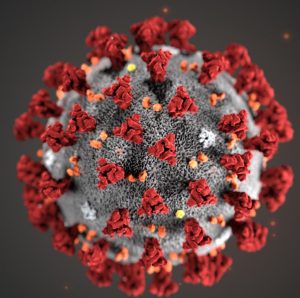ASU scientific team finds new, unique mutation in coronavirus study
 SARS-CoV-2 mutation mirrors one found during 2003 SARS outbreak
SARS-CoV-2 mutation mirrors one found during 2003 SARS outbreak
As the coronavirus pandemic has swept across the U.S., in addition to tracking the number of COVID-19 daily cases, there is a worldwide scientific community engaged in tracking the SARS-CoV-2 virus itself.
Efrem Lim leads a team at Arizona State University that looks at how the virus may be spreading, mutating and adapting over time.
To trace the trail of the virus worldwide, Lim’s team is using a new technology at ASU’s Genomics Facility called next-generation sequencing to rapidly read through all 30,000 chemical letters of the SARS-CoV-2 genetic code, called a genome.
 Each sequence is deposited into a worldwide gene bank, run by a nonprofit scientific organization called GISAID. To date, over 16,000 SARS-CoV-2 sequences have been deposited in GISAID’s EpiCoVTM Database. The sequence data shows that SARS-CoV-2 originated from a single source from Wuhan, China, while many of the first Arizona cases analyzed showed travel from Europe as the most likely source.
Each sequence is deposited into a worldwide gene bank, run by a nonprofit scientific organization called GISAID. To date, over 16,000 SARS-CoV-2 sequences have been deposited in GISAID’s EpiCoVTM Database. The sequence data shows that SARS-CoV-2 originated from a single source from Wuhan, China, while many of the first Arizona cases analyzed showed travel from Europe as the most likely source.
Now, using a pool of 382 nasal swab samples obtained from possible COVID-19 cases in Arizona, Lim’s team has identified a SARS-CoV-2 mutation that had never been found before — where 81 of the letters have vanished, permanently deleted from the genome.
The study was published in the online version of the Journal of Virology.
Lim says as soon as he made the manuscript data available on a preprint server medRxiv, it attracted worldwide interest from the scientific community, including the World Health Organization.
“One of the reasons why this mutation is of interest is because it mirrors a large deletion that arose in the 2003 SARS outbreak,” said Lim, an assistant professor at ASU’s Biodesign Institute.
